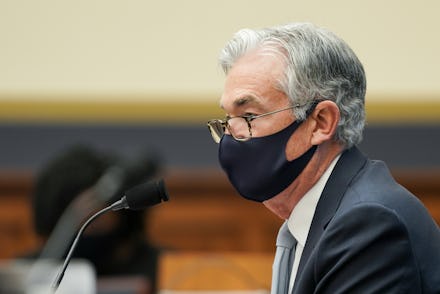There will be a new Fed chair in 2022. Here's why you should care

With the coming of new leadership, a lot of people are paying close attention to President Biden's Cabinet picks. But those positions aren't the only ones you should be thinking about. As the United States hopes to move toward economic recovery, the Federal Reserve chair will play a big role coming out of the coronavirus pandemic. But outside of political geeks and econ wonks, most people aren't too familiar with this position. So, you may be asking: What makes the Federal Reserve Chair so important?
Across the world, central banks help regulate a country's money supply, value of its currency, and more. In the U.S., the Federal Reserve System, often referred to as the Fed, takes up this position. The Fed's job is to manage inflation, maximize employment, and stabilize interest rates, and the Federal Reserve chairperson heads up the Fed.
The process for appointing the Federal Reserve chair has some similarities to Cabinet appointments. Like the secretary of state, the Federal Reserve chair is picked by the president and must then be confirmed by the Senate. However, the president can't just choose anyone they want. The Fed is run by its own Board of Governors composed of seven people (who are also appointed by presidents to serve 14-year terms). The president has to choose his Fed chair from one of those seven, because the Federal Reserve chair's formal title is actually chairperson of the Board of Governors of the Federal Reserve System.
After being confirmed, the Federal Reserve chair serves for four years. The current chairman, former President Donald Trump appointee Jerome Powell, took office in February 2018, so his term is coming to an end in February 2022. At that point, Biden will be able to pick the new chairman. As outlined by Vox, it's a decision that needs to be taken very, very seriously — and here are some reasons why you should be paying attention too.
The interest rates mastermind
When it comes to interest rates, several factors determine their fluctuation. But one of the biggest is the Federal Open Market Committee (FOMC). Made up of 12 members — the seven members of the Fed's Board of Governors, the president of the Federal Reserve Bank of New York, and four of the other 11 Reserve Bank presidents — the FOMC meets eight times per year and its actions affect short-term and variable interest rates.
This is because the FOMC sets the interest rates when banks lend each other money that gets held at the Fed overnight. It also decides the interest paid on funds kept at the Fed. So if the Fed raises its interest rates, that means banks will have to pay more money on what they lend out. To cover that cost, the bank is going to end up charging you a higher interest rate, too.
And of course, as the head of the Fed's Board of Governors, the Federal Reserve chair is also in charge of the FOMC.
The lending gatekeeper
Along with setting interest rates, the Fed sets reserve requirements, a.k.a. the amount of money that banks must have in cash. Let's pretend a bank has $100,000 in deposits and it's required to reserve 10%. That means the bank can lend out $90,000 in total at any given time, but must always keep at least $10,000 on hand.
High reserve requirements obviously mean the bank has to hold onto more money, so banks prefer lower thresholds because they can give out more loans. With these loans, people stimulate the economy by buying houses and establishing businesses — and also boost the banks, who earn interest money on those loans.
The Fed doesn't change its reserve requirement often — mostly because it can be costly for banks. But in March 2020, the Fed actually lowered its reserve requirement to 0% in response to the coronavirus pandemic to support lending to businesses and households.
The leader of one of the few independent agencies in the U.S.
There's no list that tells you exactly how many federal agencies exist. The 2020 Federal Register Index lists a good chunk of them, but it's probably not comprehensive. In a 2015 Senate Judiciary Committee hearing, Sen. Chuck Grassley (R-Iowa) said, "The Federal Register indicates there are over 430 departments, agencies, and sub-agencies in the federal government.” At the time, though, the Federal Register Index only showed 257.
Still, the Fed is undoubtedly a federal agency — I mean, just look at its nickname. But what's important to note is that the Fed is one of the few independent federal agencies out there. Now, independent in this case doesn't mean the Fed never answers to anybody; the Federal Reserve chair testifies before Congress twice a year, and the Fed is accountable to the American people more broadly.
However, the Fed outlines that its independence comes from the fact that it doesn't receive its funding from Congress. And while Congress may set goals for monetary policy and decide how to spend on legislative priorities, the Fed doesn't need approval from anyone in the executive or legislative branches — not even the president— on how to pursue those monetary policy goals.
Why did we give the Fed this much power? On its website, the Fed explains Congress decided it can only pursue its mission if it's making decisions based on available evidence and analysis — rather than trying to play partisan games.